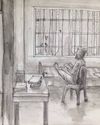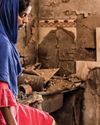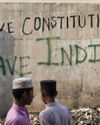Feminists attempt to correct the gender imbalance on Wikipedia’s art pages / Gender

On a Saturday morning in September, around 20 people assembled in a room at Khoj International Artists’ Association—a not-for-profit organisation that promotes alternative arts—in a narrow alley in south Delhi’s Khirki Extension. As sunlight streamed in through the large windows, the group, which consisted mostly of women, sat in rows and typed hurriedly on their laptops. A woman, who was walking around and supervising the writers, paused to address the room. “No copy-pasting— every piece of information has to be rephrased,” she said.
Everyone present was part of a Wikipedia edit-a-thon, an editing session where anyone can be invited to create pages or revise existing ones on the voluntarily edited online encyclopaedia. The theme, women in Indian contemporary art, was chosen by Khoj and Feminism in India, or FII—a digital feminist platform working on gender, media and technology—whose founding editor, Japleen Pasricha, was supervising the session. Participants had been asked to create pages on any Indian female artist from a list of 30, including Pilloo Pochkhanawala, a sculptor, and Gayatri Sinha, an art critic and curator. Most of those women did not have Wikipedia pages, and of the few that already did, many were “stubs”—Wikipedia’s term for pages with insufficient content.
This story is from the December 2017 edition of The Caravan.
Start your 7-day Magzter GOLD free trial to access thousands of curated premium stories, and 8,500+ magazines and newspapers.
Already a subscriber ? Sign In
This story is from the December 2017 edition of The Caravan.
Start your 7-day Magzter GOLD free trial to access thousands of curated premium stories, and 8,500+ magazines and newspapers.
Already a subscriber? Sign In

Mob Mentality
How the Modi government fuels a dangerous vigilantism

RIP TIDES
Shahidul Alam’s exploration of Bangladeshi photography and activism

Trickle-down Effect
Nepal–India tensions have advanced from the diplomatic level to the public sphere

Editor's Pick
ON 23 SEPTEMBER 1950, the diplomat Ralph Bunche, seen here addressing the 1965 Selma to Montgomery March, was awarded the Nobel Peace Prize. The first black Nobel laureate, Bunche was awarded the prize for his efforts in ending the 1948 Arab–Israeli War.

Shades of The Grey
A Pune bakery rejects the rigid binaries of everyday life / Gender

Scorched Hearths
A photographer-nurse recalls the Delhi violence

Licence to Kill
A photojournalist’s account of documenting the Delhi violence

CRIME AND PREJUDICE
The BJP and Delhi Police’s hand in the Delhi violence

Bled Dry
How India exploits health workers

Status Update
India’s telling silence on the Hagia Sophia controversy